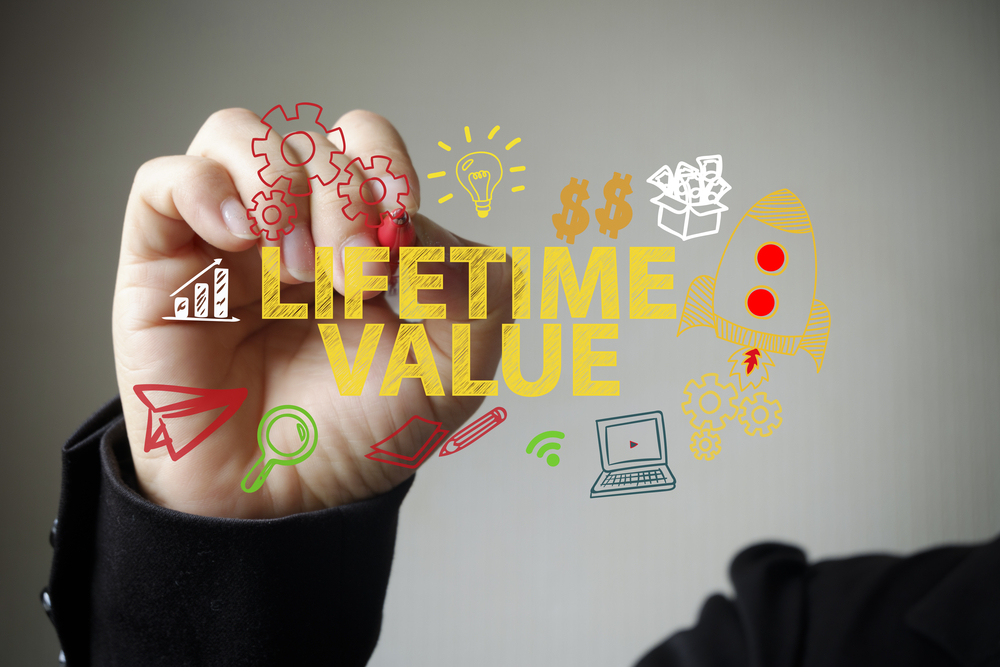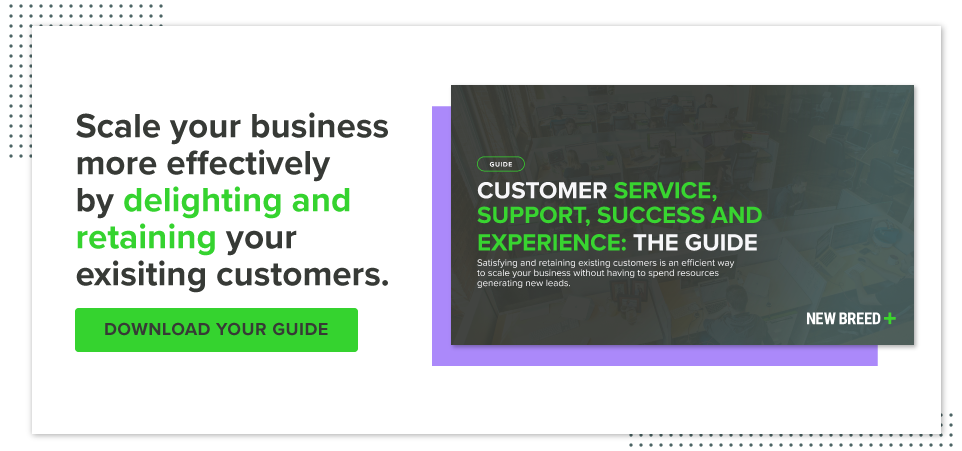Customer Lifetime Value (CLV): What Is It and Why Does It Matter?

Customer Lifetime Value (CLV) is the amount of value you receive from your average customer over the entire duration of your relationship.
To calculate your CLV, you must first calculate your margin. In a nutshell, your margin is the difference between the revenue you receive from a customer and all of the costs associated with that customer in a given timeframe. Your margin is then multiplied by your retention rate and divided by one plus your average discount rate minus your retention rate.
The full equation for calculating CLV looks like this:
Customer Lifetime Value = Margin * Retention Rate / (1 + Discount Rate - Retention Rate)
CLV is an important metric to understand when setting and measuring goals for your business. If you’re trying to exceed a specific revenue goal in a given time frame, you’ll need to know your CLV in order to actually achieve that.
CLV to CAC Ratio
Understanding how your CLV relates to the customer acquisition cost (CAC) is important as well. If you’re spending more time and money acquiring a customer than you receive once they’ve signed with you, your business won’t profit.
If you need to improve your CLV to CAC ratio, you can reduce your CAC, increase your CLV or do both by focusing your marketing efforts on companies matching your ideal customer profile.
Lowering Acquisition Costs
You can reduce the amount of time you’re spending acquiring each customer and streamline that process through methods like a freemium model or product-led growth.
These strategies reduce your marketing investment by making the initial sign-up process for a product as frictionless as possible, allowing the product to prove its own value and convince customers to convert to the paid versions of it.
Additionally, you can reduce your costs by minimizing the amount you spend on less effective channels and focusing more on the channels bringing in the most value.
Focusing on Ideal Customers
You can focus on the types of customer that give you the highest CLV. Ideally, those customers will also be easier to sell to, so you’ll have a lower CAC — and once you do sell to them, they’ll spend the most time and money with you.
Customers who match your ideal customer profile should be easier to delight, and as you add more success stories and create more evangelists, you’ll see a reduction in your CAC through less tangible means, such as brand promotion, referrals and renewals.
Increasing Value
To increase your CLV, you need to examine your pricing strategy. If you have a very high price, and people aren’t seeing matching value from your product, you’re probably going to have a poor retention rate. Customers could be churning because they’re not seeing the value that was originally sold to them.
To address that problem, you can reduce your price. For example, Hootsuite cut their churn in half by offering a discounted annual price without making any changes to their product.
Another way to help align perceived product value with price is to add new features or functionality to the product or service to increase the perception of value.
Improving Customer Experience
To increase the value you gain from your customers, consider increasing the value you provide for your customers. One way to do this is examining the different stages customers go through once they sign with you:
Onboarding
If you have a great solution for a customer, but you’re not able to onboard them properly, there’s a very high probability that they’re not going to get much value out of the product or service that you sell to them, in which case there’s an increased chance of churn.
Continued Relationship
Maintaining solid relationships with your customers helps you understand how they are gaining value from your product or service.
HubSpot, for example, does this by maintaining a partner network of agencies who help their clients get the most value out of the HubSpot Platform. Some of those partners even help with the onboarding, which increases HubSpot’s margin, and therefore their CLV, because they don’t spend as much time servicing their customers.
Knowledge bases are self-service versions of the agency system HubSpot uses. Customers can go into the knowledge base and get value for themselves by learning about the platform. The HubSpot Academy is a great example of this by providing information not just on their methodologies, but also how to use their products.
Having a knowledge base with customer service and support built into the way someone interacts with your product can be a great way to increase your product’s value for your customer.
Another way to maintain a relationship with your customers is through a customer success manager who is available for questions, checks up on your clients regularly and makes recommendations on how customers can get more value out of your product.
Renewal Process
With any SaaS platform, you’ll eventually have to renew with your customers. If you have to spend a lot of time or money on the renewal process, that’ll cut into your margin and CLV.
Making the renewal process as seamless and easy as possible or anticipating the challenges ahead of time by having a solid relationship with your customers can also improve the CLV by extending the contract length.
The Takeaway:
Customer Lifetime Value is something every company should measure. You should understand how much value you’re gaining from every customer you onboard and how much time you need to spend with each one.
CLV can be used as an efficiency metric: If you increase it, you can increase your margins, your gross profit and your business. Going through the process of increasing your individual CLV can increase your revenue year over year without actually adding customers to your bottom line.
If you don’t take CLV into account, you could have a broken business model without realizing it. You might not actually be receiving positive ROI from new customers. If you don’t reach a point where your CLC exceeds your CAC, your business will fail eventually.
Guido Bartolacci
Guido is Head of Product and Growth Strategy for New Breed. He specializes in running in-depth demand generation programs internally while assisting account managers in running them for our clients.





